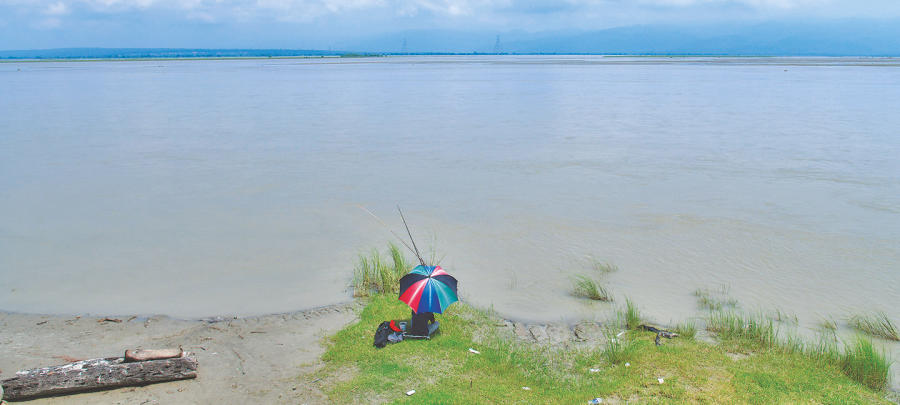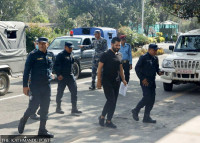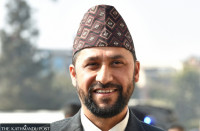National
India and Bangladesh seek to sign deal on real-time flood data sharing with Nepal
After the meeting between Nepal and Bangladesh on Thursday, a bilateral meeting between Nepal and India is expected in early September.
Prithvi Man Shrestha
Nepal is holding discussions with India and Bangladesh about sharing of weather and flood data in real time so as to help avoid monsoon-induced disasters while allowing the countries to make necessary planning based on those data.
During a meeting of the Nepal Bangladesh Joint Expert Committee on Harnessing Water Resources and Mitigating Floods and Flood Damages held on Thursday, two sides agreed to conclude a Bangladeshi proposal on real time data sharing on weather and flood forecasting.
Nepal and India are also scheduled to hold discussion on data sharing during the next meeting of the joint committee on water resources expected to be held in early September in Kathmandu, according to officials.
Maheshwor Shrestha, joint secretary at the Ministry of Energy, Water Resources and Irrigation, said as per the Bangladeshi proposal, Nepal will share real-time data on floods in the country. “Bangladesh will share real-time meteorological data concerning the Bay of Bengal,” he said, adding real-time data on monsoon activity over the Bay of Bengal would help Nepal prepare for rainfall and floods.
“Bangladesh, as a downstream country, faces the risk of floods constantly and it can minimise the risks of monsoon-induced disasters with the availability of real-time data about floods in Nepal and India,” Shrestha added.
Nepal’s major rivers including Koshi, Narayani and Karnali are major tributaries of the Ganges river in northern India. The Ganges winds its way through northern India, eventually emptying into the Bay of Bengal. Hence, flood data of Nepal’s river system will be important for Bangladesh to avoid the risks of floods in the country.
According to the Department of Hydrology and Meteorology, it gets real time data on water level from the sensor installed in several rivers including Koshi, Narayani and Karnali.
The department has installed such sensors in 140 locations across several rivers, of which about 110 are currently working while others are swept away by floods, according to Sunil Pokharel, senior divisional hydrologist at the Department of Hydrology and Meteorology.
Such instruments have also been installed in rivers including Mahakali, Kankai, Kamala, Bagmati, Eastern Rapti and Western Rapti and Babai, among others.
Pokharel said that the department updates the information taken from the sensors on its website in real time which would benefit both Bangladeshi and Indian government agencies to make decisions.
However, the department does not update the volume of water in the rivers on its website. “Maybe Bangladesh wants the data about volumes of water in rivers too,” said Pokharel.
On the other hand, meteorological data of Bay of Bengal will be important for Nepal as monsoon coming from there determines the level of rainfall the country witnesses.
Cyclones coming from the Bay of Bengal have also been affecting the country’s mountaineering sector time and again. In May last year, Nepal observed the impact of back-to-back cyclones in the Arabian Sea and the Bay of Bengal which disrupted climbing activities.
Shrestha, the joint secretary, said Nepal and Bangladesh agreed on the importance of real-time data sharing during the meeting and decided to conclude the draft Memorandum of Understanding (MoU) proposed by the latter at the next meeting scheduled to be held in Dhaka in September.
“If such an MoU is signed with Bangladesh, it will be the first time Nepal would be sharing data about floods and weather with any country,” he said.
Nepal and India have also agreed on the need for sharing real-time hydro-meteorological data for flood forecasting between the two countries at the eighth meeting of Nepal-India Joint Committee on Water Resources held in New Delhi in January, 2019.
“We had given a nod to the Indian proposal for sharing the hydrological and meteorological data in real time,” Shrestha said. “But bilateral meetings to discuss the matter could not take place in the last three years due to Covid-19 pandemic.”
Nepal and India have not signed any MoU on real time data sharing on weather and floods. “No draft of MoU has yet been shared between the two sides,” Shrestha said. “The next meeting will be crucial to real-time data sharing.”




 6.12°C Kathmandu
6.12°C Kathmandu















